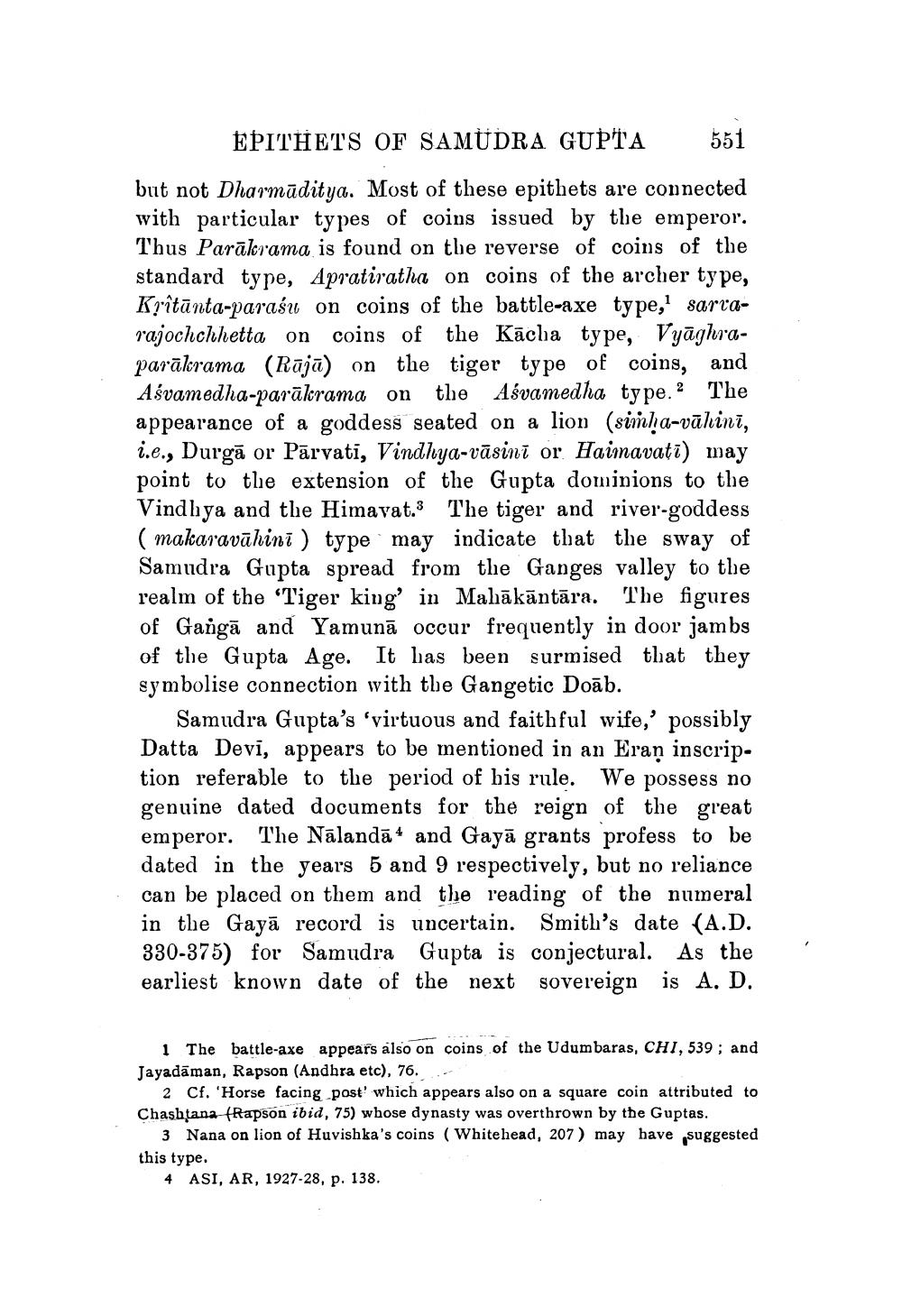________________
EPITHETS OF SAMUDRA GUPTA
551
but not Dharmāditya. Most of these epithets are connected with particular types of coins issued by the emperor. Thus Parākrama is found on the reverse of coins of the standard type, Apratiratha on coins of the archer type, K?'îtānta-parašu on coins of the battle-axe type,' sarvarajochchhetta on coins of the Kācha type, Vyāghraparālorama (Rājā) on the tiger type of coins, and Ašvamedha-parākrama on the Aśvamedha type. The appearance of a goddess seated on a lion (simha-vāhini, i.e., Durgā or Pārvati, Vindhya-vāsinī or Haimavati) may point to the extension of the Gupta dominions to the Vindhya and the Himavat. The tiger and river-goddess ( makaravāhini ) type may indicate that the sway of Samudra Gupta spread from the Ganges valley to the realm of the 'Tiger king' in Mahākāntāra. The figures of Gangā and Yamunā occur frequently in door jambs of the Gupta Age. It has been surmised that they symbolise connection with the Gangetic Doāb.
Samudra Gupta's 'virtuous and faithful wife,' possibly Datta Devī, appears to be mentioned in an Eran inscription referable to the period of bis rule. We possess no genuine dated documents for the reign of the great emperor. The Nālandā and Gayā grants profess to be dated in the years 5 and 9 respectively, but no reliance can be placed on them and the reading of the numeral in the Gayā record is uncertain. Smith's date (A.D. 330-375) for Samudra Gupta is conjectural. As the earliest known date of the next sovereign is A. D.
1 The battle-axe appears also on coins of the Udumbaras, CHI, 539; and Jayadāman, Rapson (Andhra etc), 76.
2 Cf. 'Horse facing post' which appears also on a square coin attributed to Chashtana frapson ibid, 75) whose dynasty was overthrown by the Guptas.
3 Nana on lion of Huvishka's coins (Whitehead, 207) may have suggested this type.
4 ASI, AR, 1927-28, p. 138.




